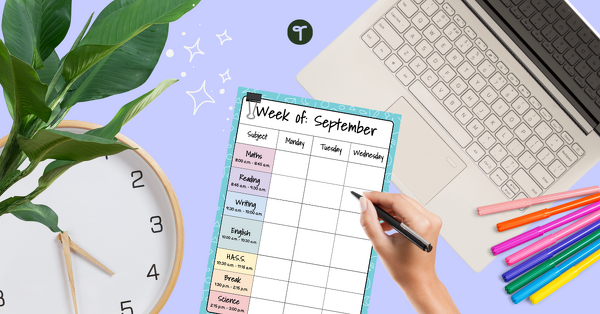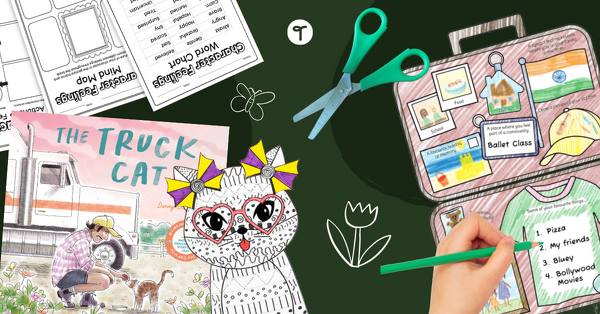Many Australian schools are transitioning into visible learning classrooms, but how do we know if we are promoting visible learning?
Visible learning depends greatly on the attitude and actions of the teacher. The teacher needs to be transparent, active, passionate and engaging in their own teaching and learning with the students. As teachers, we need to teach in the most deliberate and visible ways. To the students, what we do matters!
Professor John Hattie from the University of Melbourne believes there are eight important mind frames of a visible teacher:
- to continually evaluate their own performance
- to reflect upon how their actions may effect outcomes for students
- to see themselves as a ‘change agent’; changing and enhancing the learning of their students
- to regularly seek feedback about themselves and their teaching
- to use student assessments as a tool for learning about their own teaching
- to constantly challenge the students and limit the use of the phrase ‘do your best’
- to talk less and create a dialogue with the students, ensuring they make up 80% of classroom talk
- to build trust and rapport so that students will ask for help and take risks with their learning.
As visible teachers, we can create visible learning in our classrooms by:
- displaying clear learning intentions and goals
- jointly constructing challenging success criteria
- using a range of learning strategies
- knowing when students are not progressing and assisting them
- providing immediate and relevant feedback
- actively modelling how to be a visible learner.
Clear learning intentions and challenging success criteria
Learning intentions need to be transparent and understood by the students, so that they are engaged in their learning. It is best to have learning intentions that link back to the curriculum and use language that is suitable for the age group of the students. The learning intention should be referred to at the start of a lesson, so that students understand the goal of the task.
Once a clear learning intention is understood, it is important to create a challenging success criteria with the students. Students should identify what they have to do to achieve the goal and list these as a checklist. When success criteria are constructed by the students, they will have a better understanding of what they need to do, becoming more engaged in their own learning. The success criteria cannot be too easy or too hard, as this will not challenge the students and make them lose interest in the task.
An example of displaying learning intentions and success criteria for English, Mathematics and Science would be to attach them to the class whiteboard and refer to them daily at the start, middle and end of a lesson.
[resource:43116][resource:15933][resource:7034][resource:43408]
Using a range of learning strategies, knowing how the students are progressing and providing feedback
To motivate and engage the students, it is important to ensure that there is a range of learning strategies available.
The use of Multiple Intelligences and Bloom’s Taxonomy could assist with creating different learning strategies, as well as the use of information technology and different classroom materials. Students should also have a choice in the way they present their learning, as long as it meets the learning intention and success criteria.
As the teacher, you need to see yourself as the activator, not the facilitator. It is important to monitor the progression of the students and identify when a student is finding a task too difficult, or no longer challenging. At this point, you should intervene and change the task to meet the needs of the student. This will enhance their learning and ensure they remain engaged.
Students should be aware of what they need to do, in order to know where to go to next. Providing students with feedback will give them direction for their learning and help them to move forward. It is important to provide opportunities for students to receive feedback from their teacher, their peers and themselves. Feedback should always be positive and rapid.
An example of providing students with feedback is through the use of classroom displays and student work samples. In one particular Foundation classroom, students were able to give themselves personal feedback by comparing their own writing to the work samples displayed in the classroom. Each work sample represented a ‘station’ on the ‘writing train’, indicating the text features of a simple sentence. The display was initially jointly constructed with the teacher and the students. It was then left on the wall for the students to refer to when writing, allowing them to compare their writing and identify what they needed to do to get to the next ‘writing station’.
[resource:43462][resource:43950][resource:416][resource:43447]
Showing the students that you are also a visible learner
Students will become more engaged in their own learning if they see their teacher participating as a learner with them. As a visible teacher, you should consistently display a great passion for learning, have a positive attitude and create a classroom where trust has been built and all learners feel safe. Showing the students that you are a visible learner can be as simple as taking photos of students’ work when they are on task and displaying these work samples in the classroom. These photos can then be used as a reference when referring to the learning intentions and success criteria.
[resource:19503][resource:17223][resource:12691][resource:33602]
Visible Learning at Teach Starter
At Teach Starter, we have a range of visible learning resources to assist you in the classroom.
Our Visible Learning Goal PowerPoints link directly with the Australian Curriculum for each grade level for English, Mathematics and Science. The success criteria have been left blank for you to complete with your students in class. The PowerPoint can be used on the interactive whiteboard or printed off to put up as part of a classroom display.







Comments